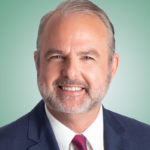If there’s one lesson I learned as a journalist interviewing lots of entrepreneurs, it’s that having the right product might be good…
But having the right timing for that product in the marketplace? That’s even better.
Take, for instance, one of the most successful, society-changing, revolutionary products of all time — the disposable diaper. (Don’t laugh!)
Procter & Gamble brought out Pampers in 1961. It was an immediate hit. Yet P&G didn’t actually invent the first fully disposable diaper.
An inventor named Marion Donovan was awarded some of the first patents — in 1951. She tried to interest manufacturers in the concept. But according to her New York Times obituary a few years ago, when they heard her idea for a diaper you could throw in the trash, they laughed.
Ten years later, a new generation of American families had better things to do with their time than deal with the hassle of cloth diapers. In today’s lingo, I guess we’d say diapers were a market ready for disruption.
I try to keep that in mind as we ponder the impact of millennials — 92 million strong, the largest generation of Americans ever — and their move to center stage of America’s economy.
What’s one of the biggest markets ready for disruption by this new generation?
Money and banking.
The Digital Revolution
When you look at survey after survey of millennials — those between the ages of 18 and 34 — you can’t find a group of Americans more dissatisfied with their financial institutions. As corporate brands, banks are highly unlikable to millennials. Five million of them don’t even have a checking account — why bother, when you consider all the outrageous fees, not to mention millennials’ well-earned distrust of banks in general?
According to Accenture’s recent survey of consumer banking attitudes, millennials are nearly twice as likely to change their primary bank compared to other generational groups.
That spells trouble for big banks — and opportunity for others.
This hasn’t escaped the notice of Profits Unlimited Editor Paul . He’s been writing about millennials and their fast-rising use of mobile payments for many months now, making sure to note how his subscribers can best capitalize on the trend.
And it looks like others are finally starting to catch on to the same trend. Just a few days ago, Barron’s cited research showing that digital payments — most of them of the mobile variety — will likely grow at a 20% annual clip. U.S. consumers made $112 billion worth of digital transactions last year; by 2021, that figure will more than double to $283 billion.
Going Global
It’s not just a U.S. phenomenon either. For instance, by most estimates there are 150 million or so millennials in Latin America — roughly a quarter of the population in the nearly two dozen countries that make up the region.
A large percentage are “unbanked,” meaning they either don’t have access to traditional banking services or choose not to use them. In Chile, roughly 4 in 10 people are unbanked. In Mexico, it’s 7 out of 10 people.
No wonder the region is becoming a hotbed for mobile banking. Privately held startups like Miami-based YellowPepper (which has attracted $40 million in venture capital so far) are staking out their turf in Latin America. So are U.S. banks and other consumer finance companies.
Getting back to my original point … these companies all know the timing is right. Mobile payments aren’t just a thing of the future — five or 10 years from now. The ground floor opportunity is here — now. And Paul is leading his subscribers right to it.
Kind regards,

JL Yastine
Editorial Director









